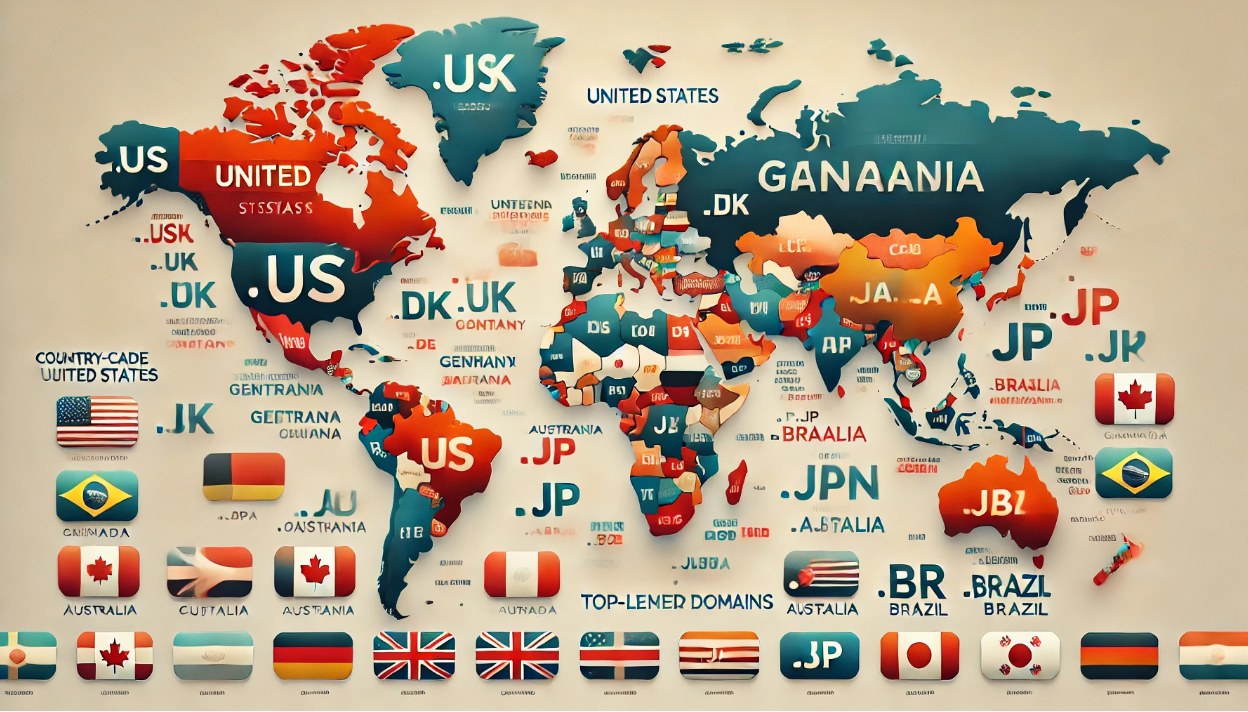How to Use ccTLDs to Expand Your Business Internationally
Expanding your business into international markets requires a localized online presence. One of the most effective ways to achieve this is by using ccTLDs (Country Code Top-Level Domains)—like .uk, .de, .fr, .ca, .in, or .jp—to target local customers.
A ccTLD helps businesses establish trust, improve local SEO, and cater to regional preferences, leading to higher conversions.
✅ In this guide, we’ll explore:
- What Are ccTLDs & Why They Matter?
- SEO & Business Benefits of ccTLDs
- How to Choose the Right ccTLDs for Your Expansion
- Best Practices for Managing Multiple ccTLDs
Let’s dive into how ccTLDs can help you expand globally!
1. What Are ccTLDs & Why Do They Matter?
A ccTLD (Country Code Top-Level Domain) is a domain extension that is specific to a country or region. Examples include:
| Country | ccTLD |
|---|---|
| United Kingdom | .uk |
| Germany | .de |
| France | .fr |
| Canada | .ca |
| India | .in |
| Japan | .jp |
Why Do ccTLDs Matter for International Expansion?
✅ Boosts Local SEO – Google ranks .fr higher in France, .de in Germany, etc.
✅ Builds Trust with Local Customers – People prefer local websites over generic .com domains.
✅ Complies with Local Regulations – Some countries require local businesses to use ccTLDs.
✅ Enhances Brand Credibility – A country-specific domain makes you look more established locally.
Pro Tip: Even if you already have a .com, getting a ccTLD for each market improves local engagement.
2. SEO & Business Benefits of ccTLDs
ccTLDs Improve Local Google Rankings
Google treats ccTLDs as a strong geo-targeting signal, meaning:
- .ca domains rank better in Canada
- .uk domains rank better in the UK
- .au domains rank better in Australia
Higher Click-Through Rates (CTR) from Local Users
Studies show that users prefer clicking on local domains. A .de site gets more German visitors than a .com version of the same site.
Avoids Language & Currency Confusion
With ccTLDs, you can:
✔️ Display content in the local language
✔️ Show prices in local currency
✔️ Offer region-specific shipping & payment options
Example:
A global fashion brand like Zara uses:
- zara.com/us for the USA
- zara.fr for France
- zara.co.uk for the UK
This localized approach boosts sales & customer trust.
3. How to Choose the Right ccTLDs for Your Expansion
1. Analyze Your Target Markets
✅ Look at Google Analytics & customer data to see where traffic is coming from.
✅ Identify high-growth regions where you can launch a localized website.
Example: If you get a lot of traffic from Brazil, consider buying yourbrand.com.br.
2. Check Local Domain Regulations
Some countries have restrictions on who can register a ccTLD:
| Country | Restrictions |
|---|---|
| .ca (Canada) | Requires a Canadian business or individual |
| .au (Australia) | Must have an Australian business presence |
| .fr (France) | Only available to businesses registered in France |
Pro Tip: If a ccTLD has restrictions, consider using a local partner or registering a .com with geo-targeting.
3. Decide Between ccTLDs or Subdomains
You have two main options for structuring international websites:
| Approach | Example | Pros | Cons |
|---|---|---|---|
| ccTLDs (Best for SEO & Trust) | brand.de, brand.fr | Strongest for local SEO, builds trust | Costly to manage |
| Subdomains (Easier to Maintain) | fr.brand.com, de.brand.com | Easier to manage, inherits main domain’s SEO | Weaker local rankings |
Pro Tip: If local SEO & branding are important, go with ccTLDs. If you want a cheaper & simpler solution, use subdomains.
4. Best Practices for Managing Multiple ccTLDs
1. Keep Content Localized
✅ Translate content into the local language
✅ Use local currency & payment methods
✅ Adapt marketing campaigns for each region
Example:
- .fr (France) – Prices in Euros (€), French language
- .jp (Japan) – Prices in Yen (¥), Japanese language
2. Set Up hreflang Tags for SEO
Google uses hreflang tags to serve the right version of your site to users.
Example for English & Spanish sites:
<link rel="alternate" hreflang="en" href="https://example.com/" />
<link rel="alternate" hreflang="es" href="https://example.com/es/" />
Pro Tip: Using hreflang helps Google show the correct country site in search results.
3. Host Your Website Locally (Optional for Speed)
If speed is an issue, consider:
✅ Hosting your .fr site in France
✅ Hosting your .de site in Germany
Pro Tip: Use a CDN (Content Delivery Network) like Cloudflare to improve page load speeds worldwide.
Final Thoughts: Use ccTLDs to Expand Your Global Reach!
A ccTLD strategy is a powerful tool for growing your international business.
Quick Recap:
✅ Use ccTLDs to boost local SEO & trust
✅ Choose markets based on demand & analytics
✅ Ensure compliance with local domain regulations
✅ Localize content, currency, and payment options
✅ Implement hreflang tags for better rankings
By following these strategies, your business can successfully expand into new international markets!

